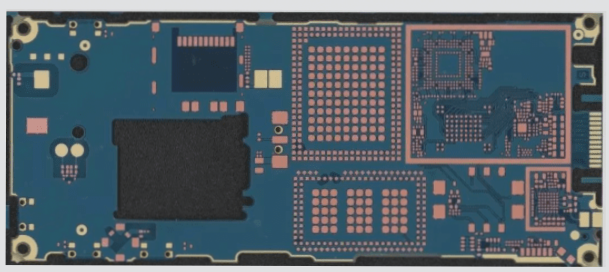In printed circuit processing, ammonia etching is a relatively fine and complex chemical reaction process that is an easy job once the process has been set up. Once turned on, it needs to maintain a continuous working state and not be stopped, as the etching process depends on the good working condition of the equipment. High-pressure spraying must be used with any etching solution, and the structure and spraying method of the nozzle must be strictly selected to obtain neat line sides and a high-quality etching effect.
To achieve a good etching effect, different theories and design methods have emerged, resulting in various equipment structures and design methods. Despite the differences in theories, all agree on the basic principle of getting the metal surface in constant contact with fresh etchant as quickly as possible, which has been confirmed by chemical mechanism analysis of the etching process. Assuming all other parameters are constant, the etching rate is mainly determined by the ammonia (NH3) in the etching solution. Therefore, using a fresh solution to interact with the etching surface serves two main purposes: flushing out the copper ions just produced and continuously providing the ammonia (NH3) required for the reaction.
In the traditional knowledge of the printed circuit industry, especially among suppliers of printed circuit raw materials, it is generally recognized that the lower the content of monovalent copper ions in the ammonia-based etching solution, the faster the reaction speed. Reducing the monovalent copper from 5000ppm to 50ppm will more than double the etch rate. However, removing monovalent copper is difficult as it is tightly combined with the complexing group of ammonia. It can be removed by converting monovalent copper to divalent copper by the action of oxygen in the atmosphere, which is achieved by passing air into the etching chamber. However, too much air will accelerate the loss of ammonia in the solution and reduce the pH value, also reducing the etch rate.
In the related field of chemical etching, research work has progressed to the stage of structural design of the etching machine, with a focus on using copper divalent instead of an ammonia-copper etch. Typical thickness of etched copper foil is 5 to 10 mils (mils) in the PCH industry, and in some cases, the thickness is quite large. Research is also being conducted on the effects of changing the design thinking of the etching device, with findings suggesting that the optimal nozzle design is fan-shaped and the spray manifold has an installation angle that can spray the workpiece entering the etching chamber at a 30-degree angle to achieve effective washing of the old solution off the etched surface while keeping the new solution in contact with it.
The latest design parameter is 65 psi (4+Bar), indicating that every etching process and solution has an optimum injection pressure, with higher density of the etching solution requiring a higher optimum injection pressure. Additionally, the relative mobility controlling the reaction rate in solution is an important parameter to consider.
To achieve a good etching effect, different theories and design methods have emerged, resulting in various equipment structures and design methods. Despite the differences in theories, all agree on the basic principle of getting the metal surface in constant contact with fresh etchant as quickly as possible, which has been confirmed by chemical mechanism analysis of the etching process. Assuming all other parameters are constant, the etching rate is mainly determined by the ammonia (NH3) in the etching solution. Therefore, using a fresh solution to interact with the etching surface serves two main purposes: flushing out the copper ions just produced and continuously providing the ammonia (NH3) required for the reaction.
In the traditional knowledge of the printed circuit industry, especially among suppliers of printed circuit raw materials, it is generally recognized that the lower the content of monovalent copper ions in the ammonia-based etching solution, the faster the reaction speed. Reducing the monovalent copper from 5000ppm to 50ppm will more than double the etch rate. However, removing monovalent copper is difficult as it is tightly combined with the complexing group of ammonia. It can be removed by converting monovalent copper to divalent copper by the action of oxygen in the atmosphere, which is achieved by passing air into the etching chamber. However, too much air will accelerate the loss of ammonia in the solution and reduce the pH value, also reducing the etch rate.
In the related field of chemical etching, research work has progressed to the stage of structural design of the etching machine, with a focus on using copper divalent instead of an ammonia-copper etch. Typical thickness of etched copper foil is 5 to 10 mils (mils) in the PCH industry, and in some cases, the thickness is quite large. Research is also being conducted on the effects of changing the design thinking of the etching device, with findings suggesting that the optimal nozzle design is fan-shaped and the spray manifold has an installation angle that can spray the workpiece entering the etching chamber at a 30-degree angle to achieve effective washing of the old solution off the etched surface while keeping the new solution in contact with it.
The latest design parameter is 65 psi (4+Bar), indicating that every etching process and solution has an optimum injection pressure, with higher density of the etching solution requiring a higher optimum injection pressure. Additionally, the relative mobility controlling the reaction rate in solution is an important parameter to consider.




